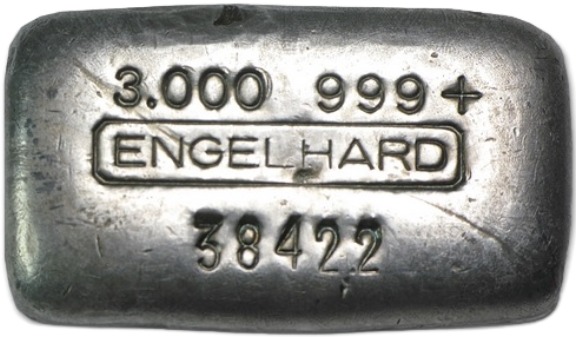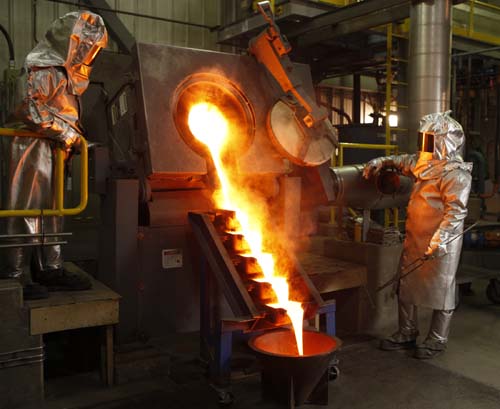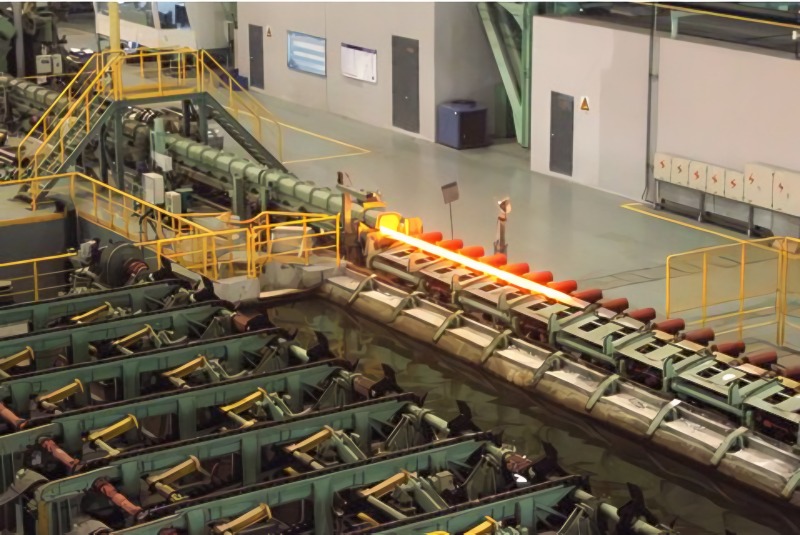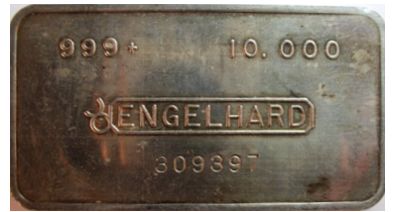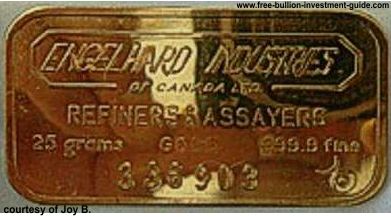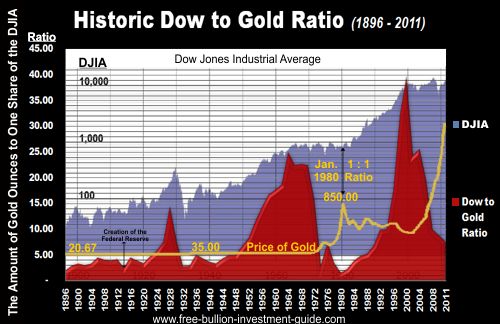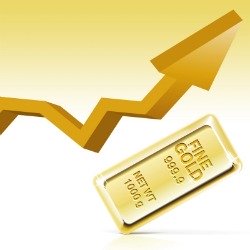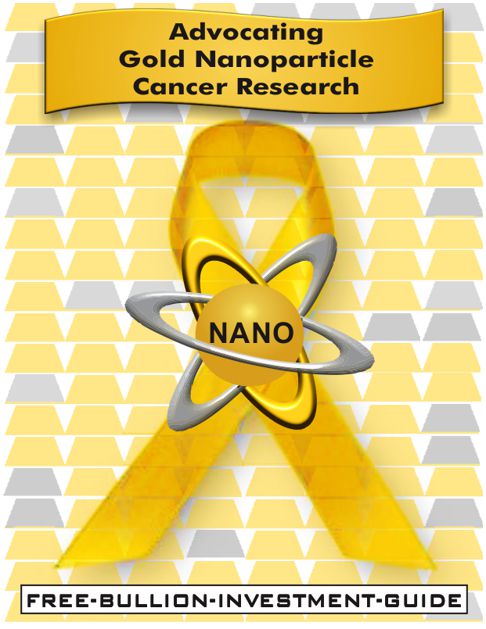Homepage / Popular Bullion Refiners: Engelhard
Last Updated on 11/30/2025
Engelhard Bullion
Since the 1970s, Engelhard has been widely known in the bullion industry to be synonymous with quality silver, gold, and platinum bullion rounds and bars.
The History of
Engelhard Industries
Charles William Engelhard (Sr.) founded Engelhard Industries; he immigrated from Hanau, Germany, to the United States in 1891.
As the brother-in-law to Wilhelm Carl Heraeus, who owned a large platinum refining business in Hanau, Germany, Charles Engelhard had been appointed the company's representative in the United States, and as sales grew, Engelhard became the leading figure in the U.S. platinum industry.
Over the next 20 years, Charles Engelhard (Sr.) began to acquire equity
positions in several precious metals companies. In 1902, Charles Engelhard established Engelhard Industries, Inc., after he bought and merged the following companies:
-
Gross & Meier Company
- the Charles F. Croselmire Company
- Baker & Company
- Irvington Smelting
- Hanovia Company
- American Platinum Works
Engelhard Industries headquarters was in Newark, New Jersey. The company refined precious metal alloys for industry by owning and operating the world's largest smelter.
In 1950, after Charles Engelhard, Sr. died, Charles William Engelhard, Jr. (February 15, 1917 - March 2, 1971) assumed control of Engelhard Industries and the title of “Platinum King” from his father.
After taking over the company, Engelhard Jr. expanded operations to South Africa, South America, and Europe and built Engelhard Industries into one of the world's leading chemical and mineral refining corporations.
In 1958, Engelhard became a publicly traded company on the New York Stock Exchange.
Goldfinger
Ian Fleming, who created the James Bond Series, was friends with Charles Engelhard, Jr. and used his likeness as inspiration for his character Auric Goldfinger, in the novel and film Goldfinger.
By comparing these pictures with the video below, you can see the resemblance of Auric Goldfinger, from Charles Engelhard Jr.
Restored:
American's Right to Own Gold Bullion
Engelhard is known to have manufactured silver bullion bars in the late 1960s and platinum bullion bars in the early 1970s; however, the company could not produce and sell gold bullion bars and rounds to U.S. residents because it was illegal to do so.
Executive Order 11825
On December 31, 1974, U.S. President Gerald R. Ford Jr. signed Executive Order 11825. The order repealed Executive Order 6102, signed on April 5, 1933, by President Franklin D. Roosevelt, which forbade U.S. citizens to own gold.
On the same day Executive Order 11825 was signed into law, Engelhard Industries began to provide gold bullion bars and rounds for the public to purchase.
Engelhard called their first gold bullion bars for sale "Baby Bullion," they ranged in size as seen by "clicking here" from one troy ounce to 40 troy ounces. Samuel Weiss & Co of New York was one of the first retailers of these gold bars.
In 1977, the U.S. Congress passed a law forbidding any U.S. President to confiscate gold from U.S. citizens except during a time of war.
Engelhard stopped producing investment bullion bars in 1988 after the price of precious metals had fallen and demand for bullion dried up.
The Catalytic Converter
Charles Engelhard, Jr. died on March 2nd, 1971.
Sadly, he did not live to see some of his company's biggest and most profitable innovations concerning platinum group metals (PGMs).
In the early 70's, after Engelhard's death, the company developed the first catalytic converter for gasoline engines, helping the American auto industry meet stiff new EPA standards. The converter's design used a honeycomb of platinum group metals that changed exhaust gases from an internal combustion engine into less toxic substance.
Automobiles equipped with catalytic converters meet today's emission standards that require reductions of up to 98% of HC (Hydro-Carbons), 96% for CO (Carbon Monoxide), and 95% for Nx (Nitrogen Oxide) compared to the uncontrolled levels of automobiles sold in the 1960s.
 A Catalytic Converter turns car exhaust from
A Catalytic Converter turns car exhaust from Hydro-Carbons (HC), Carbon Monoxide (CO), Nitrogen Oxide (Nx) into
Water (H2O), Carbon Dioxide (CO2), and Nitrogen Dioxide (N2)
BASF
On May 30, 2006, Engelhard was purchased by BASF after the board agreed to the transaction; the company paid $US39 per share for Engelhard Industries; the transaction totaled $5 billion.
Headquartered in Ludwigshafen, Germany, BASF - Badische Anilin- und Sodafabrik, is German for "Baden Aniline and Soda Factory" It is the largest chemical company in the world.
Engelhard
Bullion Rounds
The American Prospector
Gold, Silver, & Platinum Rounds
Engelhard's "The American Prospector" bullion rounds were minted in silver, gold, and platinum and were Engelhard's first bullion rounds minted and marketed to the public. The company started to mint the rounds in the mid-1970s and continued to produce them until 1988.
The silver rounds were made in the following sizes in troy ounces:
- 1 troy oz.
- 1/2 troy oz.
- 1/4 troy oz.
- 1/10 troy oz.
The gold rounds were made in the following sizes in troy ounces:
- 1 troy oz
- 3/4 troy oz
- 1/2 troy oz.
- 1/4 troy oz.
- 1/10 troy oz.
Platinum rounds were only made in 1oz.
Platinum and fractional-sized gold and silver rounds were produced in limited quantities, making them difficult to find on the secondary market and commanding higher premiums due to their scarcity.
Obverse
Relief:
- displays the image of a prospector panning for gold.
Inscriptions:
- U.S.A.
- Year of Issue
- The American Prospector
Two Reverse sides
There were two American Prospector rounds; the difference is on the reverse side. One reverse has an "E" surrounded by a Globe, and the other has an "Eagle with the American Flag and Laurel leaves, a symbol for victory, in its talons."
Inscriptions:
- ENGELHARD
- ONE TROY OUNCE
- 999+
- FINE SILVER
Check out the Reputable Dealers section below; the linked pages will take you directly to their Engelhard bullion for sale.
The Royal Mint (UK) Delivery Rates • 4.8 star - Customer Reviews
"Liberty Trade"
Gold, Silver & Platinum Rounds
Engelhard produced silver, gold, and platinum "Liberty Trade" rounds. Johnson Matthey, another well-known refiner, also made Liberty Trade rounds; however, they only produced them in gold and silver. (click photos to enlarge)
Engelhard Silver Liberty Trade rounds were made in the following sizes
in troy ounces:
- 1 troy oz
- 1/2 troy oz.
- 1/4 troy oz.
- 1/10 troy oz.
Engelhard Gold Liberty Trade rounds were made in the following sizes in troy ounces:
- 1 troy oz
- 3/4 troy oz
- 1/2 troy oz.
- 1/4 troy oz.
- 1/10 troy oz.
- 1/20 troy oz.
Engelhard Platinum Liberty Trade rounds were only made in 1oz.
Obverse
Relief:
- Lady Liberty with her right arm raised.
Inscriptions:
- 1886 Centennial (celebrates the 100 year anniversary of the Statue of Liberty)
- Year of Issue
The rounds come in proof and brilliant uncirculated versions.
Reverse
Relief:
- Lady Liberty's hand holding a torch
Inscriptions:
- LIBERTY TRADE GOLD™
- MADE IN U.S.A.
- .9999 FINE GOLD
- 1 TROY OZ.
- ©1986
- MTB (Manfra, Tordella & Brooks)
Liberty Trade Round - Identification Mark
To determine who made the "Liberty Round," look on the reverse side of the round, toward the bottom, on the left; look for an "E" for Engelhard or a "JM with pick & hammer," which is the Johnson Matthey emblem and trademark.
Liberty Trade Silver Bars
Engelhard and Johnson Matthey also manufactured Liberty Trade Silver bars.
Engelhard "Liberty Trade" Silver Bars were produced in:
- 1 troy oz.
- 5 troy oz.
- 10 troy oz.

Buy
Engelhard Bullion
from the Reputable Bullion Dealers below.
|
The Links below will take you directly to the page described. |
America's Superstore offering Precious Metal Coins and Bars from Reputable Bullion Dealers
Engelhard Bullion
Notice
- This site receives a commission when you purchase from the merchants above.
- No Personal Information is Obtained by this guide when you visit or order from any of the merchants above.
- See this guide's Affiliate Disclosure page for more information: here)
Engelhard Bullion
Manufacturing
Three methods of
Bullion Bar Production
Minted Bullion Bars - are cut from a cast bar rolled to a uniform thickness. The cutting is done with a die to create blanks with a specified dimension and weight. All the surfaces are smooth and even. Markings are usually stamped on the bar using a minting press, giving the marks on the bars a "raised" look. (Minted bullion photo provided by the courtesy of Heraeus)
Casting or Poured Bullion Bars - are produced by pouring molten precious metal directly into a mold. Markings are usually stamped on the bar using a hammer or a press. In addition, company markings on cast bars will look depressed or "sunken" into the bar.
Note: Engelhard frequently called their Minted bars "Cast Bars" and their Cast Bars "Poured Bars." See the 10oz. Silver bars section below to see how the company categorized the numerous "characterizations" on these bars.
Extruding Bullion Bars - Process in which a metal or another material is forced through a series of dies to create a desired shape or shapes. Markings are usually stamped on the bar using a hammer or a press. Engelhard company markings on extruded bullion bars will look depressed or "sunken" into the bar.

ExpressGoldCash - 4.9 star - Customer Reviews
Serial Numbers (#'s) & Mintages of
Engelhard Bullion
For those interested in Engelhard bullion serial numbers and mintage figures, 'All Engelhard' is the site you want.
It is common practice for refiners to put serial numbers on bullion to help individual investors keep track of the bars they own. However, refiners rarely keep an accessible database of bullion bar serial numbers that weigh under LBMA Good Delivery Bar specifications.
In some cases, collectors/investors will come together and start an online database for the public to find and identify who made the bullion; that's what happened for Engelhard bullion, and "All Engelhard" is that site.
For serial numbers or mintage figures about Engelhard bullion, go to All Engelhard and 'click' on 'DEFINITIVE PAGES' to find the metal/size of bar you are looking for. In addition, each section below, this guide has helped you find some of the pages on All Engelhard related to the most popular bullion bar sizes.
Engelhard Silver Bullion Bars
When Engelhard was producing bullion, the silver bullion bars were by far their most popular and widely produced. Engelhard made silver bullion bars as small as 5 grams to as large as 1000oz "Good Delivery" bars.
Odd Sized Bars
Odd-sized bars are much harder to find than the more common-sized bars. Due to popular demand, expect the value of these bars to be higher than the intrinsic value of the bullion bar.
Furthermore, they made several silver bullion bars of odd sizes, including:
- 5 gram
- 10 gram
- 1/2 troy oz.
- 2 troy oz.
- 3 troy oz.
- 100 gram
- 4 troy oz.
- 7 troy oz.
- 500 gram
- 20 troy oz.
- 25 troy oz.
- 1 kilogram
- 50 troy oz.
Find Engelhard Bullion from a Reputable Dealers: Here
1 oz. Silver Engelhard Bars
Engelhard's silver one-troy-ounce bars were the most widely produced. These bars were not only made for investors but also given as gifts, made into art bars, and at times, corporations had them made and handed out to employees as rewards.
The majority of the 1 troy oz. bars were minted.
Find Engelhard Bullion from a Reputable Dealers: Here
5 oz. Silver Engelhard Bars
5oz. Silver bullion bars were manufactured using two methods: cast, also known as poured, and minted versions.
Find Engelhard Bullion from a Reputable Dealers: Here
10 oz. Silver Engelhard Bars
The 10oz Engelhard bullion bars were the first silver bullion bars produced by the company; these bars probably have the most information written about them throughout the web.
Although many of these bullion bars have been melted down, mintage figures for these bars range as high as 2 million to as low as 1.5 million.
It is virtually impossible to know how many are still in existence.
10oz bars were both Cast and Minted. As stated, Engelhard mixed up the definitions in their early produced bullion bars.
10oz silver bars with a "P" prefix before the serial number signified the bullion bar was "Poured;" however, this wasn't always the case; minted bars also had the "P" prefix.
10oz silver bars with a "C" prefix before the serial number signify a bullion bar is "Cast or Minted."
10oz silver bars with a "W" prefix before the serial number signifies a "Wide Poured" Bar. A "W" prefixed 10oz bar is rare.
Bars with no prefix were the first 10 oz bars produced in the series, like the one in the photo (above, right).
'Click' here for more information, Photos and Serial Numbers on the Ten Ounce Engelhard Silver Bullion Bars
Find Engelhard Bullion from a Reputable Dealers: Here
100 oz. Silver Engelhard Bars
The majority of 100oz Silver bars were poured or extruded, with approximately 800,000 bars produced.
Engelhard
Gold Bullion Bars
Most Engelhard gold bars demand a collector's premium because, through the years, many have been melted down, and the ones that have survived are owned or sought by those who respect the Engelhard name for its quality bullion.
The known sizes of gold Engelhard bars:
- 1 gram
- 2.5 grams
- 5 grams
- 1/4 troy oz. (7.78 grams)
- 10 grams
- 1/2 troy oz. (15.55 grams)
- 1/2 tael (18.75 grams)
- 20 grams
- 25 grams (pictured)
- 1 troy oz.
- 1 tael - (37.50 grams)
-
1.608 troy oz (50 gram)
- 50 gram
- 2 troy oz.
- 10 tolas (3.746 troy oz.)
- 5 troy oz.
- 10 troy oz.
- 20 troy oz.
- 1 kilogram (32.150 troy oz)
The majority of the serial numbers observed on the Engelhard Gold bars have no-letter prefix.
Find Engelhard Bullion from a Reputable Dealers: Here
Engelhard Platinum & Palladium
Bullion Bars
Sizes of Engelhard platinum and palladium bullion bars are known to be in
- 1 gram
- 2.5 grams
- 1/4 troy oz. (7.78 grams)
- 1/2 troy oz. (15.5 grams)
- 1 troy oz.
- 10 troy oz.
Platinum and palladium bars were only manufactured as "minted bars." Overall, information on Engelhard's platinum bullion is hard to find. However, "All Engelhard" created this Platinum bullion page and this Palladium bullion page to help those seeking more information about these Engelhard bars.

Engelhard bullion bars can still be found on the secondary market click this link to see this guide's affiliated dealers who sell Engelhard Bullion.
Engelhard Bullion Sources:
BASF / Engelhard International Ltd
Company-Histories.com (Heraeus Holding GmbH Company)
Johnson Matthey Collectors (www.jmcollectors.com)
LBMA - A History Course, by Dr Jurgen Heraeus
Other pages you may like...
|
|
|
Engelhard Bullion

4.7 star - Customer Reviews
For Bullion Market News...
Notice:
The charts, commentary, and information on the Free-Bullion-Investment-Guide.com are not meant to encourage you to invest or divest in any particular way.
|
Support this Guide & Paypal Thank You for Your Support |
|
|
 | |||||

This website is best viewed on a desktop computer.
Keep this Guide Online
& Paypal
Thank You for
Your Support
with Feedly
Search the Guide
| search engine by freefind | advanced |
Premium Canadian Bullion

Give a lasting gift of the iconic Silver Maple Leaf bullion coin [More]
Free Shipping on Orders over $100 (CDN/USA)
or
From the U.K. Royal Mint
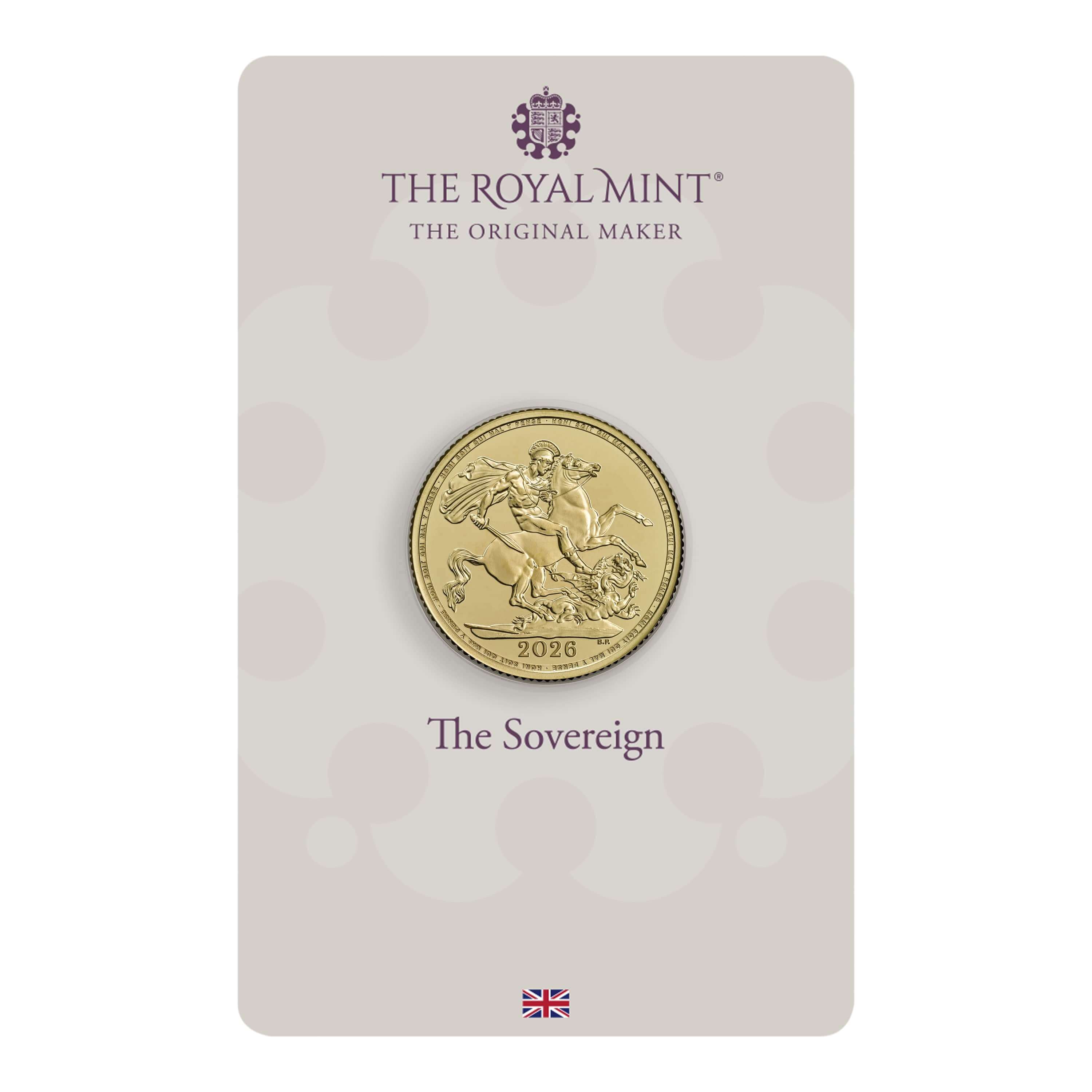

Daily
Newsletter
Updated Mintages for
American Gold Buffalo
American Gold Eagle
American Silver Eagle
2024 & 2025
Jerusalem of Gold Bullion
Coin photos
(bottom of page)
Mintages
for
2024
Gold & Silver Mexican Libertad
|
Gold Libertads |
Chinese Gold Coin Group Co.
& Chinese Bullion
Help Us Expand our Audience by forwarding our link
www.free-bullion-investment-guide.com.
Thank You!
Last Month's

In No Particular Order
November 2025
All Articles were Originally Posted on the Homepage






























